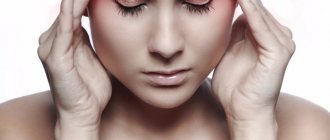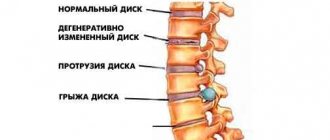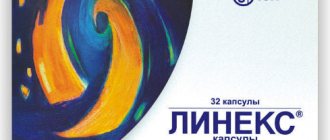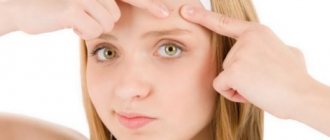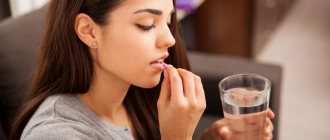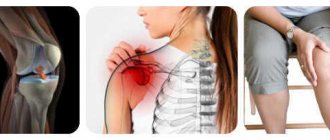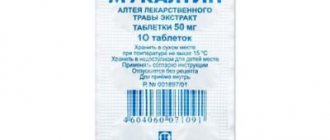Who should not inject Botox - the most important contraindications
All contraindications to Botox are divided into absolute and relative. The first means a permanent ban on injections and you need to look for alternative methods of rejuvenation. The second is time restrictions.
Absolute contraindications
These include:
- Myastic syndrome.
- Miapsia.
- Severe gravitational ptosis.
- I'm herniating my eyelids.
- Allergy to the components of the composition.
- Pregnancy and breastfeeding.
- Oncological diseases.
Myasthenia gravis is a disease that leads to disorders of neuromuscular conduction. The effect of Botox injections can aggravate its course and lead to paralysis. This will lead to ptosis, facial asymmetry, drooping eyelids or eyebrows. Side effects will be irreversible.
Serious vision problems - farsightedness, myopia - impose a complete ban on injections in the eye area. Since they can significantly impair vision. But well-executed injections in minimal doses in the forehead area or to eliminate purse-string wrinkles are acceptable after consulting an ophthalmologist.
Severe gravitational ptosis. After the age of 60, when the tissues are very sagging, Botox injections worsen the situation. Due to muscle relaxation, the clarity of the facial oval is lost even more, and the tissues become more swollen.
With a hernia of the eyelids, botulinum toxin type A increases symptoms. The bags under the eyes are likely to increase. This restriction applies to crow's feet. Injections into other areas are permitted.
Oncology does not always impose a complete ban on Botox. Much depends on the stage and treatment received. When using chemotherapy or taking a large number of medications, Botox is definitely prohibited.
In the early stages or in remission, after consultation with the attending physician, the drug can be administered in minimal doses. The patient must understand all the risks and weigh the benefits and possible harms.
Allergic reactions to both the active substance and auxiliary components, especially proteins, impose a complete ban on anti-aging injections. The risk of anaphylactic shock or death is high.
Pregnancy and lactation
There are no comprehensive studies on the dangers of Botox for a fetus or infant. But there is a risk of such. Therefore, in order to avoid serious consequences, cosmetologists refuse injections to pregnant and lactating women.
The use of any drug while carrying or feeding a child is assessed based on its potential benefit to the mother. If treatment is necessary because a woman’s life and health is at risk, medications are used. If there are no such risks, then the drug is abandoned.
Beauty injections can always be done after childbirth or completion of breastfeeding, so no doctor will take risks and exclude possible negative consequences for the child.
Attention! It is often believed that menstruation is a contraindication to Botox. But this is a misconception. There is no evidence of incompatibility between the procedure and this physiological process. But if you have any prejudices about this, it is better to wait until the bleeding is over.
Relative contraindications to Botox
These include the following conditions:
- Inflammatory processes in the body.
- Infectious diseases.
- Dermatological diseases.
- Plastic or other facial surgery.
- Drinking alcohol 48 hours before the procedure.
Various inflammatory processes in the body can be aggravated by botulinum toxin. Therefore, it is important to wait for complete recovery or remission of the disease. Such conditions include a cold, and it is also worth postponing Botox injections.
Since infectious diseases are treated with antibiotics, and some of them are incompatible with botulinum toxin, it is better to temporarily abandon anti-aging procedures.
Plastic surgery or thread lifting are incompatible with injections. After they are completed, complete recovery must occur and only then can Botox be used.
The following dermatological diseases are temporary contraindications:
- herpes;
- erysipelas;
- barley;
- rosacea;
- psoriasis;
- dermatitis of various etiologies;
- acne.
The admissibility of injections can be assessed by a doctor during examination. The drug is administered in the absence of damage and inflammation on the skin. But, for example, with acne on the forehead, it is acceptable to use Botox in other areas.
Botox and ARVI
Separately, it is worth noting that acute respiratory viral infections and acute respiratory infections do not require Botox injections. This is due to the fact that during the administration of the drug, a fever may occur, which will worsen the already not the best state of health. It's better to play it safe and wait a few days until recovery.
Botox for colds, especially those accompanied by high fever, is not recommended. Increased body temperature causes blood vessels to dilate. This may interfere with the “installation” of the drug. Also, because of this, the substance can move to other muscles that were not intended to be immobilized. This will lead to side effects such as drooping eyebrows.
A runny nose in itself is not a contraindication to Botox, but if you have a cold or acute respiratory viral infection, injections should be avoided. It is better to play it safe and speed up your recovery than to minimize the consequences of an unsuccessful procedure.
What other restrictions are there?
In diabetes mellitus there are no direct restrictions on manipulation, but the effect of the active substance on blood sugar levels has not been studied. Therefore, the patient needs additional consultation with an endocrinologist. After injections, you need to carefully monitor your blood glucose levels.
Fluctuations in blood pressure due to hypertension or hypotension can lead to improper redistribution of Botox. It is better to refrain from anti-aging injections and replace them with hardware procedures.
Botox should be used with caution if you have multiple sclerosis or rheumatoid arthritis. The tendency to form keloid tissue may also limit the use of the drug.
How Botox Therapy works
Botulinum toxin A., the main component of the drug Botox, is, according to its characteristics, a nerve toxin. When it enters muscle tissue locally, it causes instant paralysis as a result of which the muscle relaxes for a long time. If the effect is total and if vital organs are affected, death may occur. And if Botox is administered topically - for example, in some areas of the face, then the drug is well tolerated: nothing hurts, and there are no pronounced clinical problems.
The main area of influence is the frontal part of the head, bags under the eyes, and peri-orbital areas. The drug paralyzes facial muscles, as a result of which they relax and stretch the skin, removing wrinkles on the face. Over the course of several months, Botulinum toxin is eliminated and the muscle returns to its original state, while normally nothing hurts. To a first approximation, the process of Botox injections does not have particularly noticeable side effects (in the absence of gross mistakes by the doctor or the patient himself), but the effect is stunning. Injections of the drug are carried out very easily, do not leave marks on the face, can be carried out on an outpatient basis and repeated many times, without requiring a preparatory period. The fact that Botox is dangerous and can exhibit certain negative effects, as well as the existing contraindications, is often kept silent.
How does Botox affect a person?
The active substance of the drug, botulinum toxin type A, is a powerful poison. It is produced by the bacteria Clostridium botulinum, the causative agent of botulism.
But the substance used in medicine and cosmetology is produced in laboratory conditions. It goes through several stages of sedum. Therefore, in properly selected doses it cannot cause harm to health.
Botox for the face is safe, except in cases of contraindications.
A substance injected into a muscle blocks its nerve endings. Which leads to long-term, sustainable relaxation.
The skin is not deformed due to facial expressions, wrinkles and creases are smoothed out. A woman loses the habit of “using” immobilized muscles.
In medicine, the drug is used in the complex therapy of cerebral palsy to relieve muscle spasms. For the treatment of strabismus, torticollis, and other diseases.
Excessive sweating – hyperhidrosis – can also be successfully treated with Botox. The drug is administered into the armpits, palms, and feet.
The mechanism of action of Botox is described in the video:
Long-term effects of Botox therapy
However, most of the negative effects of Botox disappear relatively quickly without leaving noticeable traces. For example, inflammatory reactions go away within a week or two, as does swelling of the face; ptosis levels out within 2-3 months, asymmetry can also noticeably smooth out over the same period. Removing bags under the eyes is not a problem at all - just use proven cosmetics.
It has long been believed that Botox is completely harmless in the long term, but this is now considered an outdated understanding of how it works. The fact is that this drug began to be actively used in cosmetology relatively recently, so medicine is only now beginning to accumulate information about possible problems that may appear after a long period of time after the first injections. Even if nothing hurts, paralysis of facial muscles caused by Botox leads to the following consequences:
- Total disturbance of facial expressions caused by redistribution of motor activity of facial muscles;
- Atony, and general weakness of the entire muscle layer of the head;
- Increased sagging and dry skin due to disruption of normal trophism.
These troubles take a long time to manifest themselves, however, in most cases, they do not go away.
Possible complications after the procedure
Negative consequences after Botox occur when the doctor’s recommendations for rehabilitation are not followed, or when the drug is administered incorrectly. Sometimes for the first few days you may experience discomfort at the injection sites and mild headaches.
Complications after rejuvenation may be as follows:
- swelling;
- hematomas;
- numbness;
- facial asymmetry;
- drooping eyebrows;
- spasms of the eyelids;
- immobilization of the upper lip;
- inflammation when the sterility of the procedure is violated.
In women with active facial expressions, wrinkles may appear in other areas of the face. Since the functions of “relaxed” muscles are partially taken over by others.
The substance is eliminated from the body in 4–9 months, depending on the drug, which makes side effects reversible. But this does not mean that you can be negligent about contraindications after Botox injections.
Compliance with rehabilitation rules is important for proper distribution of the drug.
Indications for use
The administration of the drug requires medical supervision and is carried out by a doctor after studying the patient’s general clinical history and assessing the condition of the facial skin.
The main indications for the use of botulinum therapy include the following factors.
INDICATIONS
- pronounced wrinkles on the forehead;
- “gloomy” facial expression due to facial wrinkles between the eyebrows on the bridge of the nose;
- drooping edges of the eyebrows or their unclear contour;
- the presence of small multiple wrinkles around the eyes;
- wrinkles in the area of the cheekbones and cheeks;
- deep nasolabial folds (along with contour plastic surgery);
- vertical wrinkles above the upper lip;
- nose wings are too large;
- gummy smile (together with contour plastic surgery);
- presence of a “double” chin;
- “rings” of skin folds on the neck;
- Excessive sweating in the palms and armpits.
Botulinum therapy is effective and justified in the presence of horizontal facial wrinkles, vertical folds around the mouth, small wrinkles around the eyes (otherwise, “crow’s feet”).
You should not rely on the action of Botox if there is a pronounced structural change in skin texture, small senile wrinkles, or general sagging skin.
To eliminate possible consequences, it is necessary to properly prepare for the procedure.
Botox can be a preventative measure. For example, if a person frowns frequently, the drug can eliminate this habit, thereby reducing the wrinkles that will appear in the future. However, I recommend giving injections only if the patient needs them, taking into account the indications.
Plastic surgeon Paul Nassif
How to avoid complications after Botox procedures
The limitations of the first hours and days after the Botox rejuvenation procedure are due to the fact that the substance takes time to “fix” and begin to act.
Therefore, it is forbidden to bend low or throw your head back for the first 4-6 hours. You can't lie down for about the same amount of time.
You cannot touch your face, much less massage it, for the first two days. Decorative and caring cosmetics are prohibited.
You should also abstain from active physical activity - fitness, swimming, jogging, sex. The ban lasts for several days.
Saunas, steam baths, solariums, and prolonged exposure to direct sunlight are contraindicated in the first week. Do not take a hot bath or blow dry your hair. Any contact with hot air and water is prohibited.
Do not rush to do hardware peelings and cleansing after Botox; they are also on the list of contraindications. Procedures are allowed after three or four weeks.
You need to abstain from alcohol for a week or two, and from long flights.
For the first week, cosmetologists recommend sleeping only on your back.
Botox injections are incompatible with taking antibiotics, anti-inflammatory and painkillers; check contraindications with your doctor in advance.
Compatibility with other drugs
Taking certain medications may affect the effect after anti-aging injections. So, if 21-14 days before the procedure the patient took medications containing ibuprofen or aspirin, there is a high probability of hematomas. Therefore, in consultation with your doctor, it is necessary to stop taking blood thinning medications.
You will have to wait about a month if you were taking antidepressants, drugs that affect neuromuscular activity. Medicines that increase calcium levels in cell membranes. Some antibiotics increase the toxicity of Botox.
At a preliminary consultation with a cosmetologist, it is better to tell about all the medications you are taking or manipulations being performed. This way you will protect yourself from the unwanted consequences of rejuvenation.
Important! Botox injections will be contraindicated if less than a month has passed since laser or ultrasound peeling. Dermabrasion is also a reason to wait with injections.
Recommendations from experts
If in a particular case Botox injections have a large number of contraindications, the cosmetologist will select alternative rejuvenation methods. In case of relative contraindications, experts advise not to rush and wait a while.
An alternative to Botox is mesotherapy, injection of fillers, and thread facelift. When choosing a procedure, it is necessary to take into account the presence of restrictions on them.
A new product in cosmetology, nano-Botox can also become a replacement for injections. In this case, a special composition in the form of a mask is applied to the face; its principle of action differs from injections.
Botox procedure from a dermatocosmetologist:
Advice! Experts recommend not to rush to inject into several areas at once. Since there is a high risk of the so-called waxy face.
